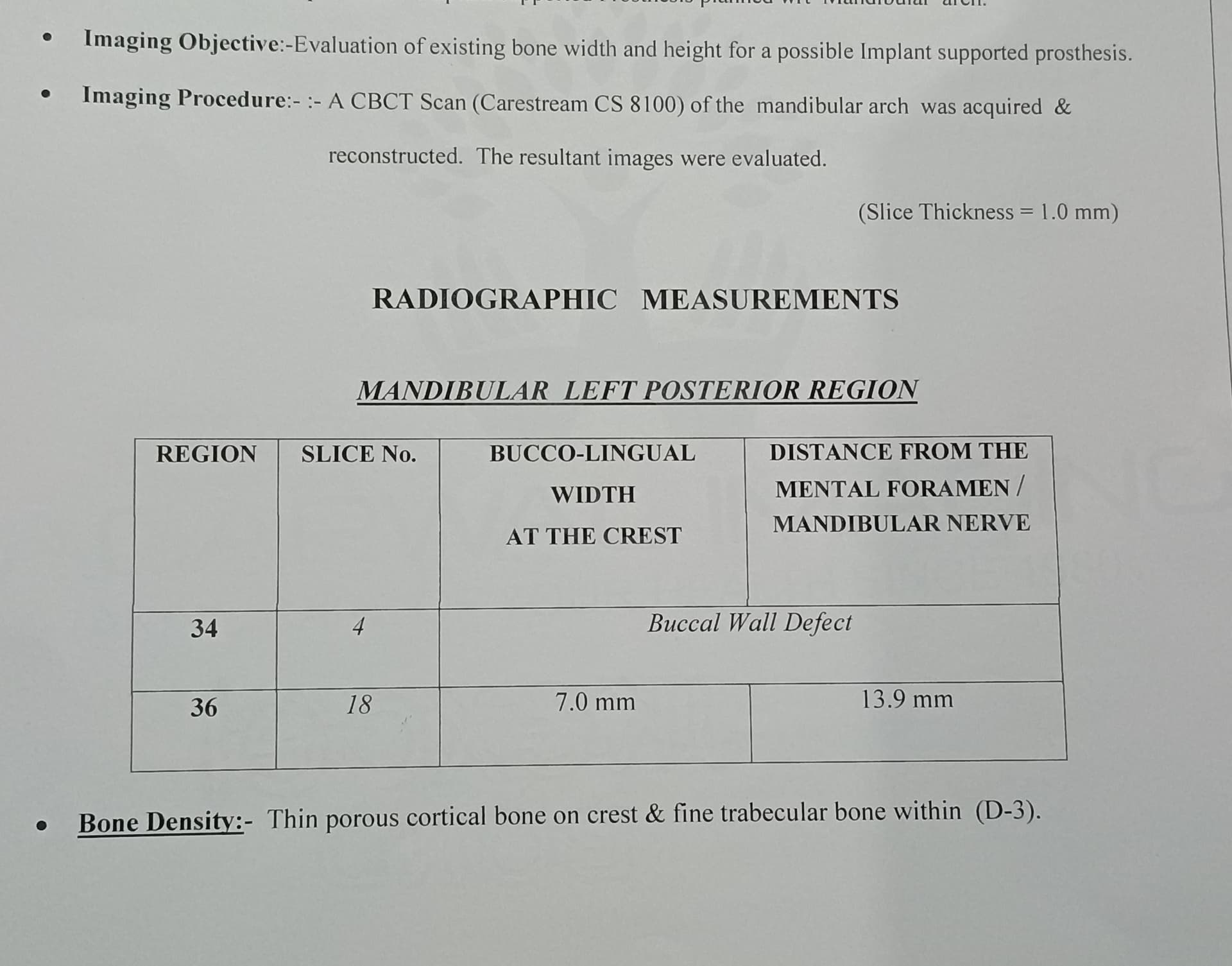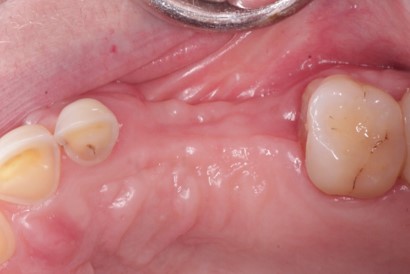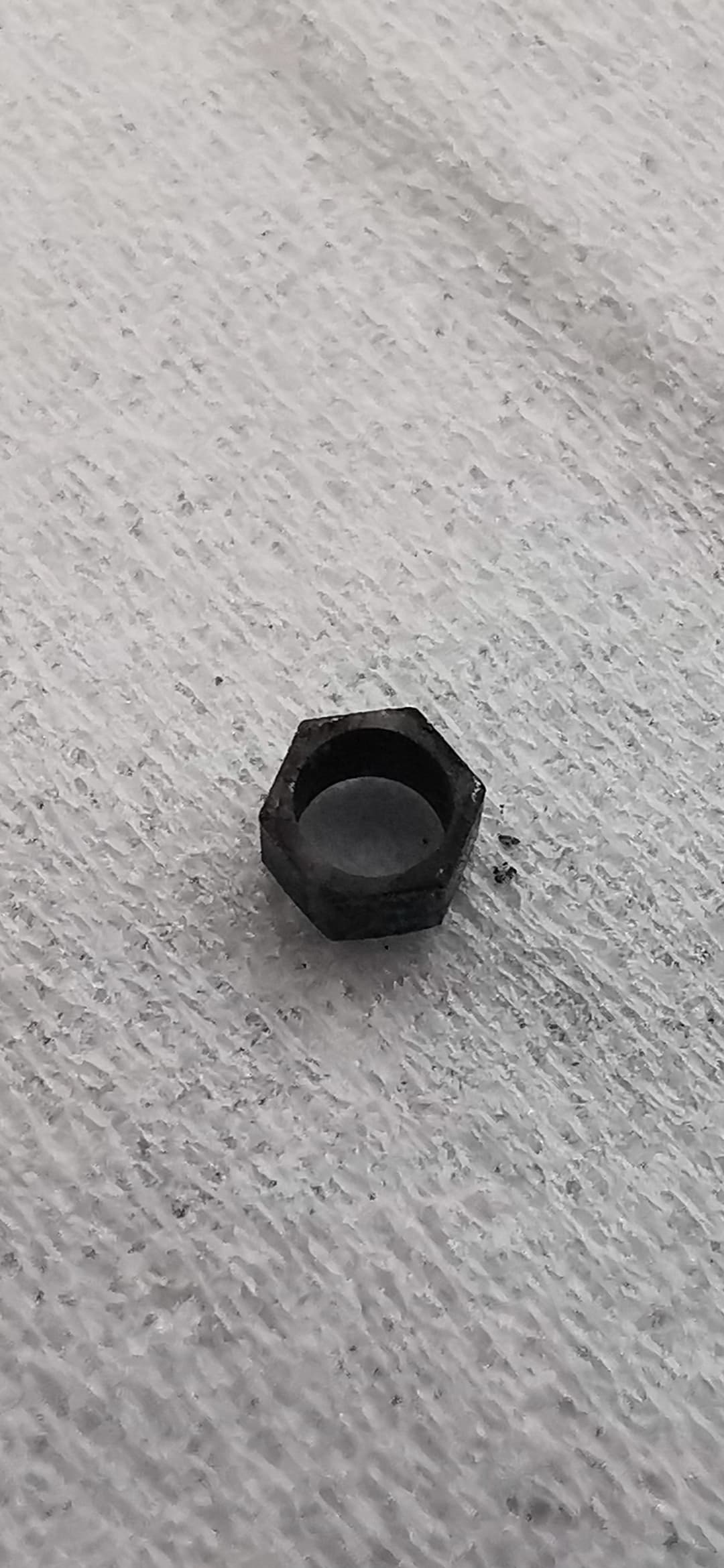Mandibular Nerve Disturbances: Thoughts?
This patient presented for full mouth extractions, immediate implants and conversion of existing denture. What appears to be Condensing Osteitis was noted in the posterior mandible. After full mouth extractions, and adequate alveloplasty, the flap was advanced apically to visualize mental foramina prior to placing distal implants at ~30* angle to 1-avoid mental, 2-avoid drilling into sclerotic bone, and 3-better apical spread and cantilever. After surgery, the office provided a technician to come in and convert the denture. The patient complained of “burning sensation”, but responded appropriately to other stimuli. I reduced the flange on the lower right and the patient reported “less pressure and burning”. Today the patient reports pain on both sides. Patient is to take a post-op CT tomorrow and I will see her in the afternoon.
My question is:
If the implants need to be removed, can I place ~4mm (size of implant) more anteriorly with same implants or are they infected in this probably nutrient void area of sclerotic bone? Patient was put on Medrol dose pack already. Thank you in advance for your help and kind critique.



















